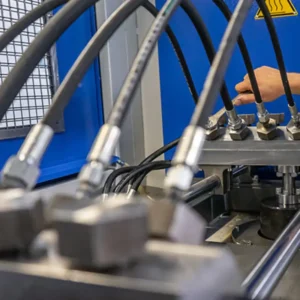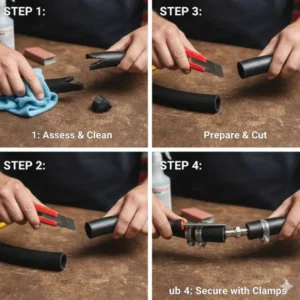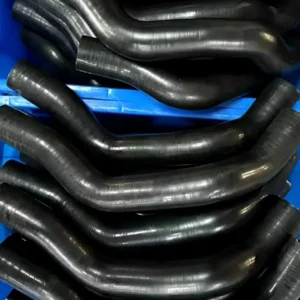Are you plagued by the problems of common garden hoses: tangles, kinks, and brittle cracks from excessive sun exposure? Stainless steel garden hoses are stylish, durable, and promise to solve all these age-old problems. But are they really as amazing as they’re cracked up to be? Let’s delve into the pros and cons of stainless steel garden hoses to see if they’re right for your gardening needs.
What Is Stainless Steel Garden Hose?
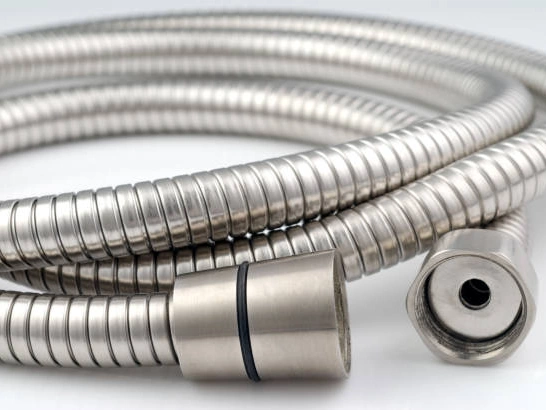
Before we get to the good and the bad, it’s important to understand what we’re talking about. A stainless steel garden hose isn’t just a rigid metal pipe you lug around the yard. It’s actually a flexible inner tube—typically made from a material like PVC or EPDM, that’s encased in a durable, interlocking outer shell of stainless steel.
This unique construction is what gives it a very different feel and performance profile compared to the traditional rubber or vinyl hoses we’re all used to. The result is a hose that’s a real heavyweight in durability, yet a lightweight champion to carry.
Key Construction Features
- Inner Core: The part that carries the water. This is usually a flexible, food-grade plastic or rubber.
- Outer Casing: The most distinctive feature. It’s a series of interlocking stainless steel bands that form a flexible, armor-like shell. This shell is what gives the hose its famous kink-resistance and durability.
- Fittings: Typically made from solid brass or another durable metal, the fittings on a stainless steel hose are designed to be long-lasting and resistant to rust.
Pros of Stainless Steel Garden Hose
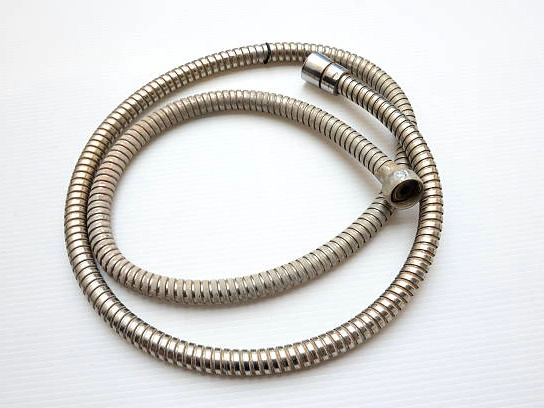
Stainless steel hoses are lightweight yet incredibly strong. Over time, we’ve discovered that their benefits go far beyond just appearance. For those tired of the hassles of traditional hoses, the advantages of stainless steel garden hoses are often the deciding factor in their ultimate choice. From unparalleled toughness to unexpected ease of use, these hoses are a true game-changer.
- Unrivaled Durability: A piece of iron armor with a metal shell, a barb, a sharp stone, and a very curious pierced tooth. I held the mixed land surface, drilled into it, and read the dog’s bite on the screen without using it. This is a long-term investment.
- Kink-Free Performance: The interlocking design of the stainless steel casing ensures that the hose remains kink-free. You can twist it, coil it, and pull it in any direction, and the water flow remains perfectly consistent. For me, this alone was worth the purchase. No more having to walk back to the spigot to untangle a knotted mess.
- Surprisingly Lightweight: Despite their metallic appearance, most stainless steel hoses are significantly lighter than their traditional rubber counterparts. This makes them much easier to carry around the yard, especially for long stretches or when moving from the front to the back garden.
- Extreme Weather Resistance: Unlike rubber hoses that crack and harden in cold weather or melt and swell in the hot sun, stainless steel hoses are built to withstand the elements. They are UV-resistant and won’t get stiff and unmanageable on a cold day, meaning they’re ready for use year-round.
- Attractive and Tidy: Let’s be honest, they look cool. The sleek, shiny finish gives a modern touch to any garden space. Plus, they coil up neatly and don’t tangle, making your storage area look much tidier.
Cons of Stainless Steel Garden Hoses
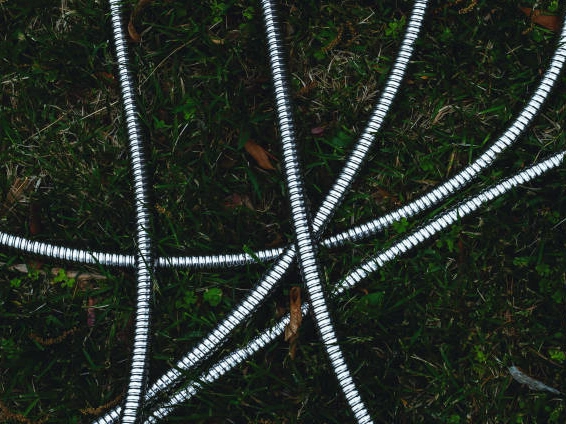
The cons of a stainless steel garden hose are important to weigh against the benefits, as they can be deal-breakers for some users. They involve everything from the initial cost to some unexpected performance quirks you should be aware of before you buy.
- Higher Initial Cost: Stainless steel hoses are almost always more expensive upfront than a standard rubber or vinyl hose of the same length. While the durability can make up for this over time, the initial investment can be a barrier for some gardeners.
- Heat Conduction: This is a big one. The stainless steel casing can get extremely hot if left in direct sunlight for an extended period. If you grab the hose after it’s been sitting in the sun, it can be hot enough to cause a burn. It’s a simple fix—just run water through it for a few seconds—but it’s an important safety consideration.
- Limited Flexibility and “Springiness”: While they don’t kink, they also don’t have the same supple flexibility as a standard rubber hose. The interlocking design gives them a certain stiffness, and they tend to “spring back” when you try to coil them tightly. This can make them a little awkward for winding around a traditional hose reel.
- Potential for Lower Burst Pressure: Many standard stainless steel garden hoses have a lower burst pressure rating than high-quality commercial-grade rubber hoses. For most home use, this isn’t an issue, but if you have a specialized high-pressure nozzle or application, it’s something to check.
Are Stainless Steel Hoses Better Than Rubber Hoses?
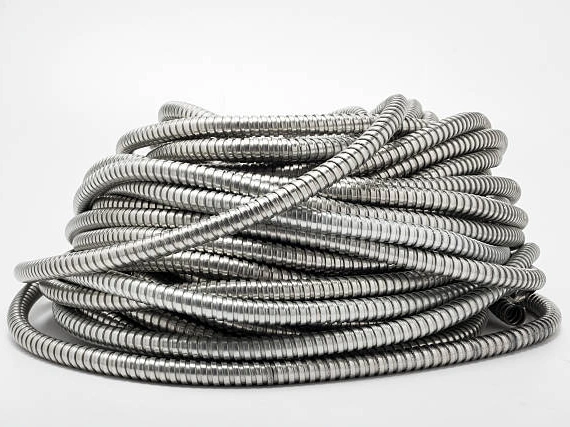
When you’re trying to decide between a stainless steel hose and a traditional one, it really comes down to what features you value most.
| Feature | Stainless Steel Hose | Traditional Rubber Hose |
| Durability | Excellent. Resists punctures, abrasion, and animal damage. | Fair to Good. Prone to cracking, kinking, and punctures over time. |
| Kink Resistance | Perfect. Impossible to kink due to interlocking design. | Poor to Fair. Often kinks easily, interrupting water flow. |
| Weight | Very lightweight. Easy to carry and maneuver. | Heavy, especially for longer lengths. It can be a chore to move. |
| Cost | Higher initial investment. | Lower initial cost. |
| Flexibility | Rigid and “springy.” Not ideal for tight coiling. | Very flexible. Easily coils and maneuvers around corners. |
| UV/Weather Resistance | Excellent. Won’t crack or get stiff in sun or cold. | Poor. Degrades and cracks with sun exposure over time. |
| Heat | Excellent. Won’t crack or get stiff in the sun or cold. | Less prone to overheating on the surface. |
Who Is a Stainless Steel Hose Best For?
Based on our experience and what we’ve heard from other users, we think you can choose this hose based on your needs.
- The Durability Seeker: If you are tired of replacing your hose every couple of years due to punctures, sun damage, or wear and tear, a stainless steel hose is the perfect solution. Its longevity will save you money and headaches in the long run.
- The Kink-Hater: If the constant kinking of a traditional hose is a source of frustration for you, the kink-free nature of a stainless steel hose will be a revelation. This is arguably the biggest selling point and a major quality-of-life improvement.
- The Pet Owner: If you have dogs or other pets that like to chew or play in the yard, a stainless steel hose is a fantastic choice. The durable shell protects the hose from a pet’s curiosity, giving you peace of mind.
- The Lightweight Carrier: For anyone who struggles with the weight of a heavy rubber hose, the lightness of a stainless steel hose makes it much easier to use, especially for older gardeners or those with physical limitations.
Conclusion
While the cost and heat conduction are real drawbacks, the sheer durability and kink-free performance make a stainless steel garden hose a worthwhile upgrade for the majority of homeowners. It’s a product that solves the most common and annoying hose problems, making your time in the garden more enjoyable and far less frustrating.

